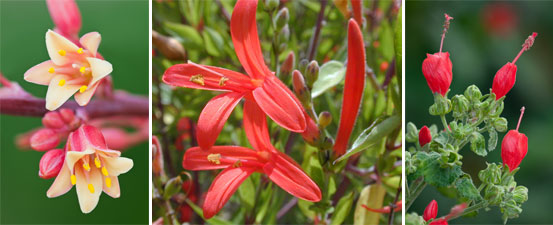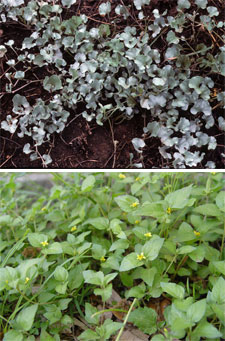Nothing to Sneeze At
WHETHER YOU LIVE IN KNOXVILLE, New Orleans or other cities heading the list for worst allergies this spring, the season may have turned you into a walking pharmacy. But you could enjoy the blooming outdoors more often by making some changes in your own backyard. Here are some tips from Dr. Janice Kvale, a Mr. Smarty Plants volunteer, and Andrea DeLong-Amaya, horticulture director at the Wildflower Center, about reducing allergy sources in your landscape.
Low-pollen tree choices:
Did you know that it is the male reproductive parts of trees and other plant species that produces pollen (the equivalent of sperm in animal species)? And that, when trees are available that have individuals with separate sexes, landscapers and nurseries often provide male specimens because of concern customers won’t want to clean up after the fruit and seed of female plants? Whether you’re a Texan selecting new options at the Center’s Spring Native Plant Sale in April or have a nursery around the corner to visit, ask if female versions of plants are available. And check into the upkeep that their fallen fruit will involve.
There are also native trees that produce less pollen than others, such as flowering dogwood and sweetbay. Some other options available in many parts of the country that can be pruned to become shrubs are yaupon and American holly. Planting woodies like these in your yard could make a difference — depending on the amount of pollen blowing in from elsewhere. Pollen from Ashe juniper, for example, may travel hundreds of miles to harass cedar fever sufferers in Texas.
Animal-pollinated plant choices:
Some pollen granules have evolved to be carried by the wind. Luckily, many other plants rely on butterflies, moths, hummingbirds, beetles or bats to serve as taxi cabs that move pollen between male and female plant parts. These plants include many beautiful options. Among the native ones you can consider are flame acanthus and red yuccain Texas, purple coneflower and other species nationally in the aster family, such as fall asters.

LEFT Red yucca (Hesperaloe parviflora). PHOTO Wildflower Center CENTER Flame acanthus (Anisacanthus quadrifidus). PHOTO Joseph A. Marcus PHOTO Turk’s Cap ((Malvaviscus arboreus var. drummondii). PHOTO Wildflower Center
Flowers with a strong fragrance may also irritate your throat and cause allergy symptoms (just as perfumes and colognes can do). Avoid using native plants such as Texas mountain laurel, Mexican plum, agarita and kidneywoodin Texas that have strong scents. Instead, DeLong-Amaya recommends low-fragrance options such as Turk’s capand pavonia in Texas, and native members of the verbena, lily and hibiscus families nationally.
Ground cover considerations:

TOP Silver ponyfoot (Dichondra argentea). PHOTO Sally and Andy Wasowski BOTTOM Horseherb (Calyptocarpus vialis). PHOTO Melody Lytle
Although mulching is a great way to keep plants healthy, some options have an allergy downside. If you are allergic to outdoor molds, consider using a mineral mulch such as pea gravel or crushed glass instead of organic mulches that stay wetter. Mulches that may become moldy include those made from tree bark or cocoa hulls, and compost can do the same thing.
What’s outside your garden also matters. If you have a lawn, consider keeping it mowed to prevent the grasses from blooming and spreading pollen. They can become an irritant once wind-borne. Avoid ornamental grasses as well because they are wind pollinated, and consider replacing traditional lawns, which are huge consumers of time and resources, with ground covers such as silver ponyfoot and horseherb.
If the above approaches aren’t enough, there are other ways to reduce your pollen exposure. Wearing a paper dust mask while gardening can help, as can washing your hair and changing your clothes afterward. Sound drastic? Given the mental and physical benefits that being outdoors provides, having your own Superman moment after yardwork seems a small price to pay.

